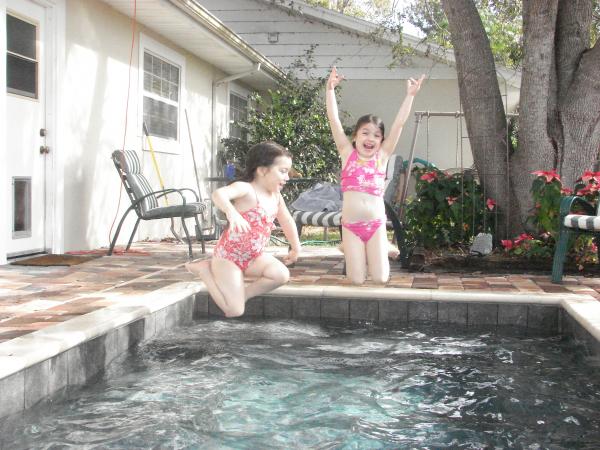 According to the Consumer Product
Safety Commission (CPSC), 350 children under the age of five drown in
pools each year nationwide, the majority in June, July and August; most
in backyard pools. Among unintentional injuries, drowning is the second
leading cause of death to this age group after motor vehicle accidents.
Another 2,600 children are treated in hospital emergency rooms each
year for near-drowning incidents.
According to the Consumer Product
Safety Commission (CPSC), 350 children under the age of five drown in
pools each year nationwide, the majority in June, July and August; most
in backyard pools. Among unintentional injuries, drowning is the second
leading cause of death to this age group after motor vehicle accidents.
Another 2,600 children are treated in hospital emergency rooms each
year for near-drowning incidents.
Many people assume that, at a residence with a pool, the danger of drowning occurs only when the family is outside or using the pool. But, a common scenario takes place when young children leave the house without a parent or caregiver realizing it. Children are drawn to water, not knowing the terrible danger pools can pose.
"Drowning happens quickly and silently, often without any splashing or screaming," said CPCS Chairman Ann Brown. "It can occur in just the couple of minutes it takes to answer the telephone."
The key to preventing pool tragedies is to have layers of protections, such as:
-
Placing safety barriers around the pool to prevent access
-
Using pool alarms
-
Closely supervising your child
-
Being prepared for unexpected emergencies
The CPSC offers these tips to prevent drowning:
-
Fences and walls should be at least 4 feet high and installed completely around the pool. Fence gates should be self-closing and self-latching. The latch should be out of a small child's reach.
-
If your house forms one side of the barrier to the pool, then doors leading from the house to the pool should be protected with alarms that produce a sound when a door is unexpectedly opened.
-
A power safety cover -- a motor-powered barrier that can be placed over the water area -- can be used when the pool is not in used.
-
Keep rescue equipment by the pool and be sure a phone is poolside with emergency numbers posted. Knowing cardiopulmonary resuscitation (CPR) can be a lifesaver.
-
For above ground pools, steps and ladders to the pool should be secured and locked, or removed when the pool is not in use.
-
If a child is missing, always look in the pool first. Seconds counts in preventing death or disability.
-
Pool alarms can be used as an added precaution. Underwater pool alarms generally perform better and can be used in conjunction with pool covers. The CPSC advises that consumers use remote alarm receivers so the alarm can be heard inside the house or in other places away from the pool area.
CPSC offers three free publications consumers can use to help prevent child drowning:
"Safety Barrier Guidelines for Pools," "How to Plan for the Unexpected" and "Guidelines for Entrapment Hazards: Making Pools and Spas Safer." Copies of these publications can also be obtained at CPSC's website www.cpsc.gov or by writing to "Pool Safety", CPSC, Washington, D.C., 20207








